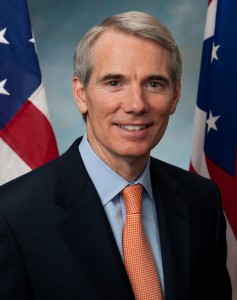 I’m A Republican Senator, And I’m Marching In Selma On Bloody Sunday. Here’s Why.
I’m A Republican Senator, And I’m Marching In Selma On Bloody Sunday. Here’s Why.
Senator Rob Portman, Cincinnati, OH
Fifty years ago, on March 7, 1965, six hundred marchers set out from Selma, Alabama on their way to the state capitol of Montgomery. Their march was a peaceful one, their cause equality and the simple freedom for African-Americans to be able to vote.
But when they reached the Edmund Pettus Bridge, they found their way blocked by a mob, backed by Alabama State Troopers. The marchers were ordered to disperse. Instead, they asked to pray.
What followed came to be known as Bloody Sunday. The mob and Troopers—some on foot, some on horseback—advanced on the marchers. Tear gas filled the air. Marchers were beaten. One of the leaders of themarch, John Lewis—who would go on to serve in the United States Congress—was bludgeoned so severely that his skull was fractured.
But those who stood on the Edmund Pettus Bridge that day proved that violence cannot overcome the human spirit, and that the forces of oppression cannot overcome the march of freedom. Images of what the peaceful protestors suffered were beamed by television to every corner of our country, and their courage inspired the nation to action.
Less than two weeks after Bloody Sunday, as a larger group of civil rights activists once again left from Selma on the way to Montgomery—this time under the protection of the National Guard—bipartisan legislation was introduced into Congress that would guarantee to all Americans the right to vote, regardless of race.
With its passage, a great victory in the long struggle for equality was won. The march for freedom goes on. While Jim Crow and institutionalized racism were long ago consigned to the dustbin of history, challenges not quite as visible but just as insidious remain. Too many children still grow up in poverty. Too many families are broken by drug abuse or by the absence of parents who are in and out of prison.
These challenges will not be easily overcome. Doing so will take all of us—from churches to community organizations, from living rooms to boardrooms, from the grassroots all the way to Capitol Hill—working together with the same unity of purpose that inspired a nation fifty years ago.
We need that same faith, that same unwillingness to bow in the face of difficulty, no matter how long the road may seem.
This Saturday, I’ll be traveling to Selma, Alabama to commemorate the fiftieth anniversary of Bloody Sunday.I’ll be joining Congressman John Lewis and other elected leaders, as well as people young and old from every background, to march across the Edmund Pettus Bridge. But this time, there’ll be no angry mobs, no beatings, no tear gas.
Today, a bridge named for a leader of the Ku Klux Klan has become a symbol of all the Civil Rights Movement accomplished.
But even as we celebrate what we have overcome, we must not forget how much further we have to go.
Dr. Martin Luther King, Jr., standing on the steps of the capitol of Alabama in Montgomery at the conclusion of the march from Selma, said, “The moral arc of the universe is long but it bends towards justice.”
He was right, but it does not bend on its own. That is the work of us all
